Access to clean and reliable water is essential for every community, and as global freshwater resources continue to face pressures from population growth and climate change, seawater desalination is becoming an increasingly popular solution. Seawater desalination uses advanced technology to convert seawater into drinkable water. This process can provide a steady and reliable water supply for municipal needs, especially in coastal cities where freshwater resources are limited. In this article, we will discuss how to choose the right seawater desalination equipment for municipal water supply and the benefits it brings.
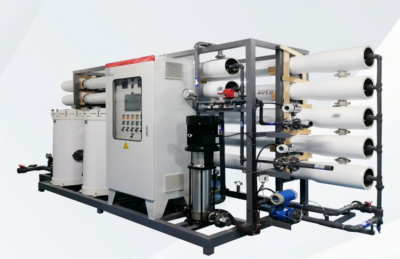
Choosing the Right Seawater Desalination Equipment for Municipal Water Supply
- Capacity and Water Demand AssessmentThe first step in choosing the right desalination system is to assess the water demand of the municipality. The capacity of the system should be aligned with the population size and the daily water consumption. Municipalities must estimate both current and future water needs, taking into account growth trends and possible increases in demand due to factors like urbanization, industrial growth, and climate change. A desalination plant with a daily freshwater output of 25-50 tons is typically suitable for smaller to medium-sized communities, while larger municipalities may need systems that can produce several hundred tons of freshwater per day.
Table 1: Average Water Consumption Per Person
Region Average Daily Water Consumption (Liters) Urban Areas 150-200 Rural Areas 100-150 Developed Countries 200-250 Developing Countries 50-100 By multiplying the average daily consumption per person by the population size, municipalities can estimate the total daily water requirement. This will help determine the appropriate size for the desalination system.
- Technology Selection: Reverse Osmosis (RO) vs. Thermal DesalinationThe most common technology used for seawater desalination is reverse osmosis (RO). RO systems are widely preferred because they are energy-efficient and produce high-quality drinking water. RO works by forcing seawater through a semi-permeable membrane that removes salt and other impurities. Other technologies, such as thermal distillation (using heat to evaporate seawater and condense it back into fresh water), can also be used, but they tend to consume more energy and are typically reserved for areas with abundant energy sources.
When selecting the right system, the municipality must consider energy costs and the availability of energy resources. For coastal areas with limited energy supply, reverse osmosis is usually the best choice due to its lower energy consumption.
- Energy Efficiency and Environmental ImpactEnergy consumption is one of the largest costs associated with seawater desalination, so choosing an energy-efficient system is crucial. Modern RO systems use energy recovery devices that recycle energy within the system, reducing operational costs. It’s important to evaluate the energy recovery efficiency and the overall energy consumption of the desalination system to minimize the environmental impact and ensure long-term sustainability.
The environmental impact should also be considered, particularly in terms of brine disposal. Brine, the leftover concentrated saltwater, can harm marine life if not properly managed. Choosing a desalination system that minimizes brine discharge and uses environmentally friendly methods of disposal is important for protecting the surrounding ecosystem.
- Maintenance and Operational CostsOver time, regular maintenance and operational costs can account for a significant portion of the total expense of running a desalination plant. Choose a desalination system that is easy to maintain and has a long lifespan. It’s essential to consider the costs of replacing membranes in RO systems, as well as the overall reliability of the equipment. Systems with a modular design tend to be easier to maintain and can be expanded as demand grows.
Table 2: Cost Comparison of Desalination Technologies
Technology Initial Investment Energy Consumption (kWh/m³) Maintenance Cost (per year) Reverse Osmosis (RO) Low to Medium 3-5 Low to Medium Thermal Distillation High 8-10 High Table 2 provides a comparison of the initial investment, energy consumption, and maintenance costs for different desalination technologies. As shown, RO systems are generally more affordable and require less energy, making them more suitable for municipal applications.
- Water Quality and Regulatory ComplianceThe quality of desalinated water must meet local health and safety standards. Municipalities must ensure that the chosen desalination system produces water that is free from contaminants and meets drinking water regulations. Most RO systems are designed to produce water that exceeds international water quality standards, ensuring that it is safe for consumption.
Benefits of Seawater Desalination for Municipal Water Supply
- Reliable Water SupplyOne of the key benefits of seawater desalination is that it provides a consistent and reliable source of freshwater. Unlike freshwater sources such as rivers or lakes, seawater is abundant and not subject to seasonal variations or droughts. Municipalities that rely on desalination can ensure a steady water supply year-round, regardless of changes in weather patterns or freshwater availability.
- Energy-Efficiency and Cost-EffectivenessSeawater desalination using reverse osmosis is energy-efficient, reducing operational costs. Thanks to advances in technology, RO systems now consume less energy and have lower maintenance requirements, making desalination more affordable for municipalities in the long term.
- Environmental SustainabilityModern desalination systems are designed with environmental sustainability in mind. By minimizing brine discharge and utilizing energy recovery devices, these systems reduce their environmental impact. Moreover, desalination helps preserve local freshwater resources, which are often over-exploited in densely populated urban areas.
- Scalability and FlexibilitySeawater desalination systems can be scaled up or down depending on the changing needs of the municipality. Whether a city is small or large, desalination systems can be customized to match water demand, making them a flexible solution for growing populations.
- Economic Growth and DevelopmentReliable access to freshwater through desalination systems supports local industries and communities. It boosts economic growth by ensuring a steady supply of water for industrial use, agriculture, and municipal needs. Additionally, desalination infrastructure can create jobs and drive technological innovation in water treatment.
Conclusion
In conclusion, seawater desalination provides a sustainable, reliable, and energy-efficient solution to meet municipal water supply needs. By selecting the right desalination equipment based on factors like capacity, energy efficiency, maintenance costs, and environmental impact, municipalities can ensure a consistent and high-quality water supply for their populations. As freshwater resources become increasingly limited, seawater desalination will play an increasingly vital role in securing a reliable water future for cities around the world.
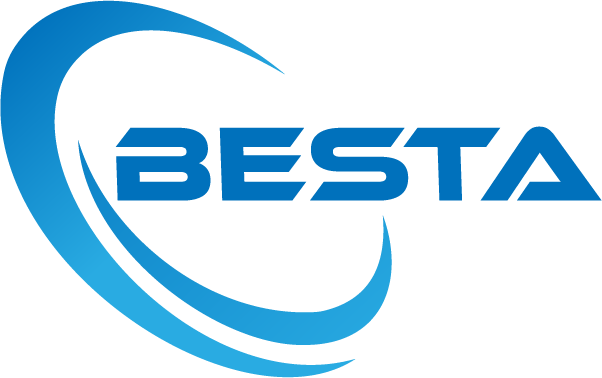
 MBR Membrane
MBR Membrane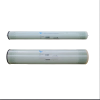 Reverse Osmosis Membrane
Reverse Osmosis Membrane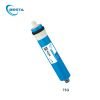 Residential Ro Membrane
Residential Ro Membrane UF Membrane
UF Membrane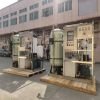 Water Treatment Plant
Water Treatment Plant Residential Ro Machine
Residential Ro Machine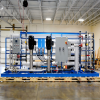 Brackish Ro System
Brackish Ro System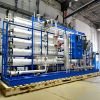 Sea water system/SW RO plant
Sea water system/SW RO plant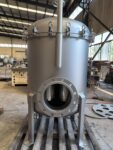 Bag Filter
Bag Filter Cartridge Filter
Cartridge Filter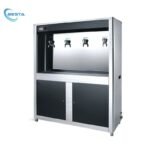 Commercial Water Filtration System
Commercial Water Filtration System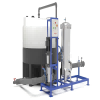 Membrane Cleaning System(CIP)
Membrane Cleaning System(CIP) Consumables Accessories
Consumables Accessories
